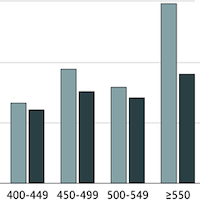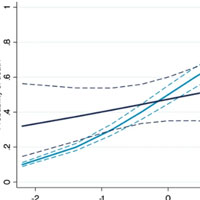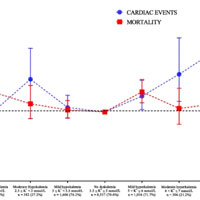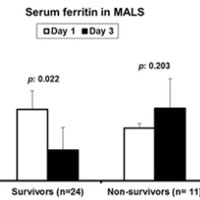Tag: mortality

ICU Bouncebacks Associated with Worse Outcomes
ICU Bouncebacks (ICUBBs) are associated with worse outcomes and are disproportionately burdened by respiratory complications. These findings emphasize the importance of the TQIP Collaborative in identifying statewide... read more

Improving Community Recognition of Sepsis Using Early Warning Scores
Introducing a community version of National Early Warning Score (NEWS) to clinical assessments in acute clinical care has shown benefits for both patients and staff, and could be disseminated to all community services across... read more

Time to Treatment and Mortality during Mandated Emergency Care for Sepsis
More rapid completion of a 3-hour bundle of sepsis care and rapid administration of antibiotics, but not rapid completion of an initial bolus of intravenous fluids, were associated with lower risk-adjusted in-hospital mortality. Among... read more

Association of Severe Hyperoxemia Events and Mortality Among Patients Admitted to a PICU
Greater numbers of severe hyperoxemia events appeared to be associated with increased mortality in this large, diverse cohort of critically ill children, supporting a possible exposure-response association between severe... read more

Defining Benefit Threshold for ECMO in Children with Sepsis
This binational study demonstrates that a rapidly available sepsis mortality prediction model can define thresholds for survival benefit in children with septic shock considered for ECMO. Survival on ECMO was associated... read more

Differential Gene Expression in Peripheral White Blood Cells with Permissive Underfeeding and Standard Feeding in Critically Ill Patients
The effect of short-term caloric restriction on gene expression in critically ill patients has not been studied. In this sub-study of the PermiT trial, we examined gene expression patterns in peripheral white blood cells... read more

Influence of Dyskalemia at ICU Admission and Early Dyskalemia Correction on Survival
Dyskalemia is common at ICU admission and associated with increased mortality. Occurrence of cardiac events increased with dyskalemia depth. A correction of serum potassium level by day 2 was associated with improved... read more

Effects of Sepsis on Mortality in Critically Ill Patients 2 Years After ICU Discharge
Compared with patients without sepsis, those with sepsis have higher mortality in the intensive care unit and have more pain, hospital readmissions, and functional decline within 2 years after discharge. During the study,... read more

Association Between Hospital Staffing Models and Failure to Rescue
Low failure to rescue (FTR) hospitals had significantly more staffing resources than high FTR hospitals. Although hiring additional staff may be beneficial, there remain significant financial limitations for many hospitals... read more

Epidemiology of Pediatric Severe Sepsis in Main PICU Centers in Southwest China
This multicenter study demonstrates that pediatric severe sepsis is common and is a factor in the high mortality rate that is observed in PICUs in Southwest China. The mortality rate remains high; therefore, improved... read more

Abnormalities in the Host Immune Response During Hospitalization for Sepsis
In this cohort study of 483 patients who survived hospitalization with sepsis at 12 US hospitals, 25.8% had elevated high-sensitivity C-reactive protein levels (a marker of inflammation) at 3 months, 30.2% at 6 months, and... read more

Delirium is Prevalent in Older Hospital Inpatients and Associated with Adverse Outcomes
Delirium is prevalent in older adults in UK hospitals but remains under-recognised. Frailty is strongly associated with the development of delirium, but delirium is less likely to be recognised in frail patients. The... read more

Update to the Vitamin C, Thiamine and Steroids in Sepsis (VICTAS) Protocol
The analyses described here are those necessary to answer the trial's primary question of whether combined treatment with vitamin C, thiamine and steroids is more effective than placebo in increasing days alive and free from... read more

Serum Ferritin Identifies Septic Patients with Macrophage Activation-like Syndrome
A serum ferritin level above 4420 ng/ml identifies in a reliable and very specific way the septic patient with macrophage activation-like syndrome (MALS). Since the recent subgroup analysis indicated a survival benefit... read more








